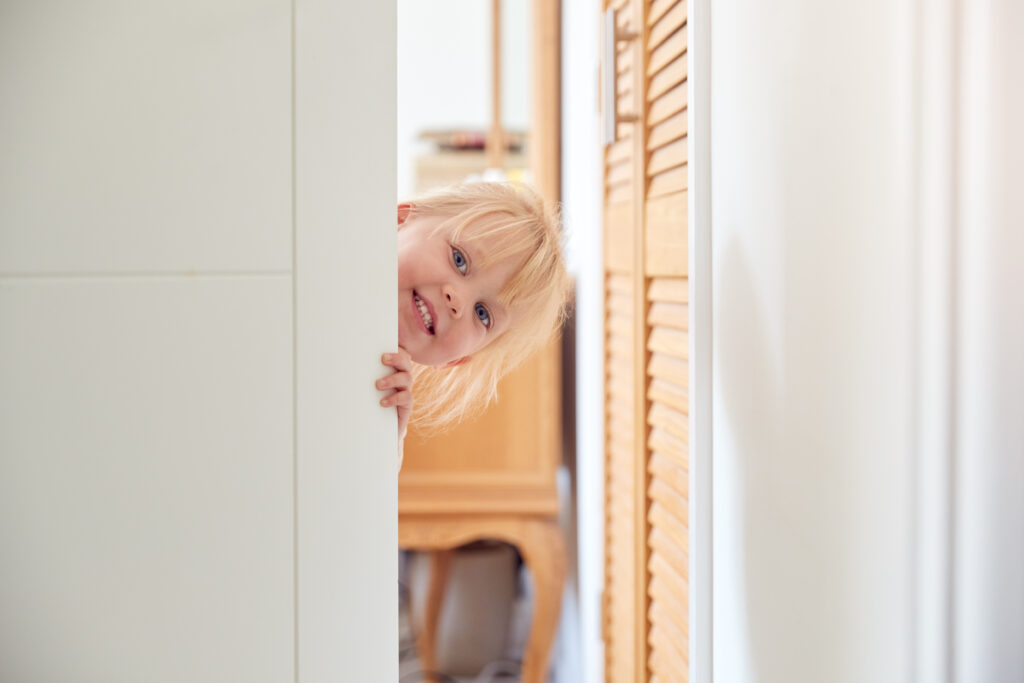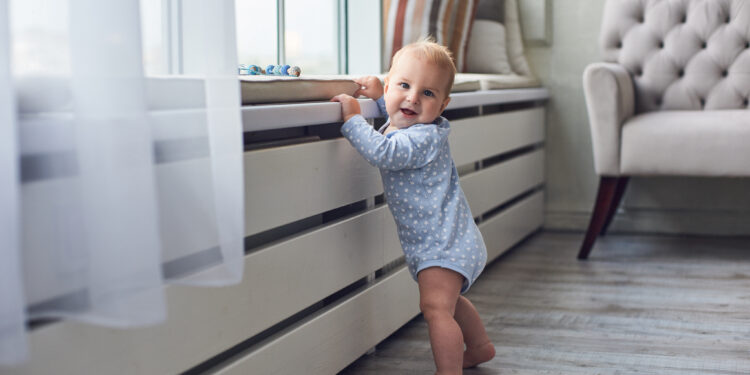Child-proofing your home should be at the top of the list as September approaches, the season of sharpened pencils, slightly too large school shoes, and frenzied morning routines that resemble minor military operations. But before the school bell rings and your hallway becomes a battleground of book bags, it’s time to tackle one of the most important parenting jobs: making sure every corner of your home is safe, secure, and ready for the whirlwind of a new term.
Whether you’ve got a crawling toddler who treats every surface like a jungle gym or a curious five-year-old who thinks plug sockets are fascinating portals, prepping your home before term-time begins can help prevent bumps, spills, and unscheduled trips to A&E. So, grab your screwdriver, clear a Sunday afternoon, and let’s transform your home into a child-safe sanctuary.
Why Child-Proofing Matters More Than Ever
With the shift back to school comes a mix of excitement and unpredictability. Children, tiny ones, often get overstimulated with new routines, early mornings, and post-school tiredness. This combination can lead to poor coordination, reduced attention spans, and sudden bursts of “Look what I can do!” energy.
And while you may think your home is already safe, hazards have a way of sneaking in when your back is turned—think unsecured bookshelves, dangling blind cords, or that lovely new plant you just discovered is mildly toxic.
But worry not. We’ve got an easy-to-follow, room-by-room guide to help you secure your house, flat, or semi before the school-year storm descends.
The Living Room: Ground Zero for Mischief
- Anchor Furniture Like You Mean It
Heavy items like bookshelves, TV units, and freestanding cabinets need to be securely fastened to the wall. All it takes is one attempt at scaling Mount IKEA for disaster to strike. Use anti-tip brackets or wall straps—easy to find in most UK DIY stores. - Soften the Corners
Coffee tables, hearths, and the evil corner of your TV stand become forehead-height hazards for toddling legs. Corner bumpers (foam or rubber) can soften sharp edges and help protect from bumps and bruises. Bonus: they also reduce damage when you’re the one who walks into the coffee table. - Secure the TV
Wall-mount your television, if you can. If not, use a low, stable unit and strap it down. Kids don’t just watch TV; they dance in front of it, lean on it, and occasionally try to high-five Peppa Pig. - Tidy the Cables
Cable tidies or trunking are a must. Not only are loose wires a strangulation hazard, they’re also a tripping risk. And nothing ends a school morning quicker than a tumble over the WiFi router.
The Kitchen: Curiosity’s Playground
- Lock Cupboards & Drawers
Especially the ones with cleaning products, knives, or cheeky biscuits you were saving. Magnetic child locks or sliding latches are easy to install and can be popped open by adults with minimal faff. - Use Stove Guards & Hob Covers
An inquisitive child plus a hot hob is a terrifying equation. Use stove knob covers and hob protectors to make tampering difficult—and cook on the back burners whenever possible. - Fridge & Freezer Locks
These are especially helpful for the toddler who loves a cheeky ice lolly at 7 am. Fridge locks are inexpensive and can prevent spills, finger injuries, or melted chaos. - Non-Slip Rugs & Mats
If you’ve got kitchen mats or rugs, ensure they’ve got non-slip backings. Wet floors and socked feet are a recipe for tears, literal and figurative.
The Bathroom: Soaking in Safety
- Toilet Locks
Toddlers and toilets are a messy mix. A simple lock can prevent toys (or small hands) from taking a dip. Plus, you’ll avoid the horror of fishing out an action figure before work. - Bath Mats & Tap Guards
Non-slip bath mats are essential, especially when shampoo turns your child into a greased otter. Tap guards prevent head bumps and burns during bath time. - Lock Medicine Cabinets
Whether it’s prescription medicine or a stash of paracetamol, it needs to be out of reach and locked. The top shelf isn’t good enough for climbers. - Remove Electricals
Hairdryers, straighteners, and shavers should never be left plugged in near water. Store them high and dry. And if you can, add RCD (residual current device) outlets to reduce the risk of electric shock.
The Bedroom: Sweet Dreams and Safer Nights
- Bed Rail Guards
If you’re transitioning your toddler into a “big bed,” bed rails help prevent midnight thuds and tears. They’re removable and come in soft or hard frame versions. - Secure Wardrobes & Drawers
Just like in the living room, tall furniture needs to be fixed to the wall. Yes, even if it “feels stable.” Toddlers have a way of disproving that theory. - Remove Choking Hazards
Small toys, buttons, marbles, and coins should be stored out of reach. Check under the bed regularly for any forgotten bits—especially LEGO. - Window Safety
Install window restrictors to prevent them from opening more than a few inches. They’re cheap, easy to fit, and crucial for homes with upper-storey rooms. - Blind Cord Safety
Use cleats or cord winders to keep blind cords high and out of reach. Better yet, replace them with cordless blinds if you’re updating.
The Hallway: High-Speed Hazard Zone
- Shoe & Bag Storage
Avoid the 8:10 am stumble over school shoes by having designated cubbies or storage benches. Teach kids to deposit shoes and bags there; it might even stick (eventually). - Baby Gates
If your hallway leads to stairs or other danger zones, a good baby gate is your best friend. Choose pressure-mounted options for temporary needs or wall-mounted ones for long-term use. - Clear the Floor
Mats, umbrellas, posts, and pet bowls all become tripping hazards in a chaotic hallway. Keep walkways clear, especially when speed-walking your child to the front door.
Outdoors: Secure the Great British Garden
- Lock Garden Sheds
Tools, lawn chemicals, and sharp implements belong behind lock and key. That rustic rake may look innocent, but it’s not meant to be a hobby horse. - Fence and Gate Checks
Ensure your fencing is sturdy and that garden gates are securely latched. Check for gaps that a wily child could slip through, especially near roads or ponds. - Padlock Bins
Kids are fascinated by bins. Keep lids closed and bins either out of reach or padlocked. This also keeps foxes out—bonus. - Water Safety
Paddling pool? Empty it after use. Garden pond? Add a safety grille. Even shallow water can be dangerous to little ones.
General Tips for Every Room
- Use socket covers on unused plug sockets
- Keep candles and matches completely out of reach
- Store plastic bags in sealed drawers or dispensers
- Teach safety basics like “hot,” “sharp,” and “don’t touch” early
- Keep emergency numbers on the fridge and in your phone.
When to Start Child-Proofing
Ideally, begin before your child starts crawling—typically around 6–10 months. But it’s never too late. Every stage brings new challenges, so child-proofing should evolve with your child.
For school starters, now’s a great time to re-evaluate your home safety setup. Term-time means new routines, increased independence, and more opportunities for mischief.
Products Worth Trying (UK Recommended)
- Lindam Safety Gates (pressure-fit and wall-mounted)
- Dreambaby Outlet Plugs and Corner Protectors
- IKEA FIXA anti-tip wall brackets (budget-friendly)
- Safety 1st Magnetic Locks for cabinets
- Gro Company Window Locking Catches
- Fred Home Safety Kit (all-in-one)
Child-Proofing Doesn’t Mean Child-Unfriendly

There’s a balance between making your home safe and still feeling like, well, a home. Aim to create spaces that encourage exploration but with boundaries. Your home shouldn’t feel like a fortress—just a lovingly padded one.
Let Them Help!
Involve your child in safety where appropriate. Let them help you “test” the cupboard lock or explain why certain things are dangerous. Teaching them as you go fosters awareness, responsibility, and fewer meltdowns when they can’t open the snack drawer.
Final Thoughts: Safety Now, Sanity Later!
Child-proofing your home isn’t just about physical safety—it’s about creating a space where everyone, including you, can breathe easier. With the school term looming and routines about to get real, a bit of prep now saves a world of panic later.
So put the kettle on, make a list (or just use this article as one), and spend an afternoon fortifying your home against the charming chaos that is childhood.
Have your own clever tricks for child-proofing your home? Share them in the comments — and don’t forget to check back at thehouseholddaily for more practical tips to keep your home safe, tidy, and toddler-resistant.


















